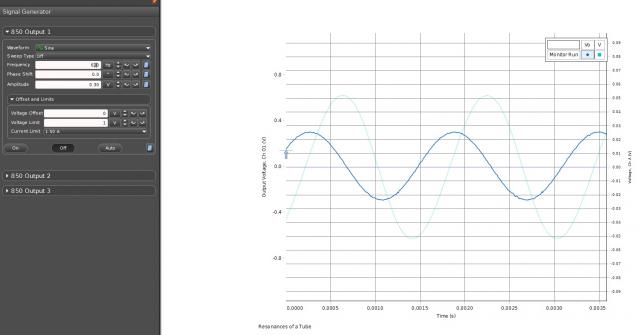Resonance in a Tube
A small speaker in the end of a tube excites standing waves. I probe microphone is move up and down the tube, searching for the standing wave maxima. A piston in the other end can be used to vary its length.
The Pasco 850 Interface is used to generate the excitation sine wave and display the microphone output in oscilloscope format. Both the driving wave and microphone signal are displayed. A Capstone template Resonance of a Tube.cap" sets up the interface.
Start at a couple of hundred Hz and a voltage of 0.3V. As you go up in frequency, you can up the voltage, maxing out at 1V. Locate the microphone at one end of the tube and adjust the frequency until a resonance is detected. Then push the microphone up the tube, noting each position where a maximum occurs.

